- Home
- Paula Byrne
The Real Jane Austen Page 7
The Real Jane Austen Read online
Page 7
A turning point was being allowed a room of her own. Shortly after Jane and Cassandra returned from boarding school for good in 1786 they were given the use of an upstairs drawing room, adjoining their bedroom. In her letters she referred to it as her Dressing Room. It had blue wallpaper and blue striped curtains and a chocolate-brown carpet. The room contained Jane’s piano and her writing desk. There was a bookcase and a table for the sisters’ workboxes.
Jane Austen was a supreme social satirist. Wit was valued highly in the Austen family. Most of the early stories are lampoons, burlesques or parodies. The point of such writing is that it copies or caricatures the style or spirit of serious works so as to excite laughter, often by ludicrous exaggeration. The great exemplar of the form in the eighteenth century was Henry Fielding, whose works Austen knew well. His Tragedy of Tragedies, or the History of Tom Thumb the Great was the classic burlesque of stage tragedy. The ‘great’ Tom Thumb is a heroic warrior who happens to be a midget. He is offered in marriage to the Princess Huncamunca, which makes Queen Dollalolla passionately jealous. Tom dies as a result of being swallowed by a cow, but his ghost returns. The ghost is put to death in turn and nearly all the rest of the cast kill each other in duels or take their own lives in grief. The young Jane Austen loved this sort of thing, and when she uses such names as Crankhumdunberry and Pammydiddle she is paying homage to Fielding.
Fielding’s great rival Samuel Richardson had pioneered the heroinecentred courtship novel when he published the smash hit Pamela, or Virtue Rewarded. Pamela is a lowly maidservant who refuses the sexual advances of her master, Mr B, and tames him by her virtue and religious principles into making her an offer of marriage. Fielding loathed the hypocrisy of the idea that the reward for virtue should be so patently material: marriage to a wealthy man with a large house. He responded with his lampoon Shamela, in which the heroine, far from being an innocent and virtuous victim, is a scheming unscrupulous hussy who entraps her master into marriage. Reading Shamela is like reading the original novel through a distorted mirror. In the original novel, Pamela is distressed by her master’s sexual advances, but in Fielding she is playing a long and sly game of sexual conquest:
He took me by the Hand, and I pretended to be shy: Laud, says I, Sir, I hope you don’t intend to be rude; no, says he, my Dear, and then he kissed me, ’till he took away my Breath – and I pretended to be Angry, and to get away, and then he kissed me again, and breathed very short, and looked very silly; and by Ill-Luck Mrs Jervis came in, and had like to have spoiled Sport. – How troublesome is such Interruption!6
Jane Austen loved to make her family laugh out loud when reading out her lampoons, but like Fielding she also approved of burlesque as a literary medium for exposing moral and social hypocrisy. And also like Fielding, she had a sharp eye for the absurdities and limitations of much of the fiction of her age.
The first story that she copied into her precious notebook was ‘Frederic and Elfrida’, a very funny parody of the sentimental novels of the day. For those who begin reading Jane Austen with Pride and Prejudice and come to the vellum notebooks only after the six mature novels, it is a disorienting experience to read ‘Frederic and Elfrida: a novel’. Early in the story comes the news that a new family has taken a house near by. Frederic, Elfrida and her friend Charlotte go to pay their respects. The arrivals in the neighbourhood are Mrs Fitzroy and her two daughters. The conversation initially turns on the relative merits of Indian and English muslins. So far, so Pride and Prejudice. But one of the sisters is beautiful and foolish, the other ugly and clever. In this topsy-turvy world it is the ugly and humpbacked Rebecca who garners the compliments: ‘Lovely and too charming Fair one, notwithstanding your forbidding Squint, your greazy tresses and your swelling Back, which are more frightfull than imagination can paint or pen describe, I cannot refrain from expressing my raptures, at the engaging Qualities of your Mind, which so amply atone for the Horror with which your first appearance must ever inspire the unwary visitor.’7
As in Fielding, the lampoon depends upon the pitch-perfect rendering of the stylistic clichés of the sentimental novel. In a serious novel of the day you would read such sentences as ‘From this period, the families of Etherington and Cleves lived in the enjoyment of uninterrupted harmony and repose, till Eugenia … had attained her fifteenth year.’ In ‘Frederic and Elfrida’ Jane Austen writes ‘From this period, the intimacy between the Families … grew to such a pitch, that they did not scruple to kick one another out of the window on the slightest provocation.’8
‘During this happy period of Harmony,’ Austen continues, ‘the eldest Miss Fitzroy ran off with the Coachman and the amiable Rebecca was asked in marriage by Captain Roger of Buckinghamshire.’ The world of the vellum notebooks is so knowing and so uninhibited that one cannot be entirely confident that the young Austen was blissfully unaware of the Georgian slang meaning of the verb ‘to roger’.9 Mrs Fitzroy disapproves of the match ‘on account of the tender years of the young couple’: Rebecca is only thirty-six and Captain Roger sixty-three. Charlotte then becomes engaged to two men simultaneously. Realizing her breach of social decorum, she commits suicide by jumping into a stream, while Elfrida, who has a most delicate constitution, is reduced to ‘a succession of fainting fits’ in which ‘she had scarcely patience enough to recover from one before she fell into another’.10
The second story, ‘Jack and Alice: a novel’, is dedicated by Austen to her younger brother Frank, ‘Midshipman on board his Majesty’s Ship the Perseverance’. Jane presumably sent a copy with a letter. We need to imagine Frank receiving it several months later, somewhere in the East Indies, and smiling at the deadpan humour of his clever sister. She has perfected the satirist’s art of bathos or ‘sinking’, the abrupt transition from an elevated style to a ludicrous conclusion. An elegant evening party is described, until at the end of the chapter the whole party ‘were carried home, Dead Drunk’.11 And a character called Lady Williams waxes lyrical about her governess:
‘Miss Dickins was an excellent Governess. She instructed me in the Paths of Virtue; under her tuition I daily became more amiable, and might perhaps by this time have nearly attained perfection, had not my worthy Preceptoress been torn from my arms e’er I had attained my seventeenth year. I never shall forget her last words. “My dear Kitty” she said “Good night t’ye.” I never saw her afterwards’ continued Lady Williams wiping her eyes, ‘She eloped with the Butler the same night.’12
So many of Austen’s greatest gifts are here in embryo: not only the comic timing and the revealing gestures (that sentimental teardrop), but also the sense of mischief and the sheer delight in human foibles – the incongruity of the ‘worthy Preceptoress’ in the ‘Paths of Virtue’ eloping with the butler. Already Austen has absolute control of her tone, and elsewhere in ‘Jack and Alice’ there are hints of the more deadly because more understated irony that is to come in the mature novels: ‘Every wish of Caroline was centered in a titled Husband.’13
‘Henry and Eliza: a novel’ might be described as Fielding’s Tom Jones meets Austen’s Emma – in parody. Eliza, like Tom, is a foundling. She is taken into the household of the goodly Sir George and Lady Harcourt, who are first seen superintending the labours of their haymakers, rewarding the industrious with smiles of approbation and punishing the idle with a good cudgelling. They bring up Eliza in ‘a Love of Virtue and a Hatred of Vice’. She grows up to be a delight to all who know her. Then the next sentence begins like an anticipation of Emma but ends with a twist: ‘Beloved by Lady Harcourt, adored by Sir George and admired by all the World, she lived in a continued course of uninterrupted Happiness, till she had attained her eighteenth year, when happening one day to be detected in stealing a banknote of 50£, she was turned out of doors by her inhuman Benefactors.’14 From being a somebody, an Emma, she turns into a nobody, a Jane Fairfax, who has to seek a position ‘in the capacity of Humble Companion’. She gains one in the household of a duchess, where Henry Cecil, the wealth
y fiancé of the only daughter, falls in love with her. The Chaplain, who has also fallen in love with her, marries them privately (and illegally) and they run off to the continent.
A family of alcoholics and gamblers, a young woman whose leg is fractured by a steel mantrap set for poachers in the grounds of the gentleman she is pursuing, a child who bites off her mother’s fingers, a jealous heroine who poisons her sisters, numerous elopements: the vellum notebooks do not contain the subject matter one might expect of a parson’s daughter. But then Steventon rectory was not the typical parson’s household. The family were all broad-minded and clearly loved black humour. Like Shakespeare, whose works they read aloud together, they knew that ‘the web of our life is of a mingled yarn, good and ill together’.15 Seeing the absurdity of the perpetual diet of virtue and piety in the orthodox literature in the family library, they relished the unshockable young Jane’s array of loose women, drunkards, thieves and murderers.
‘Lesley Castle’, dedicated to Henry, begins with a married woman called Louisa leaving her child and her reputation behind her as she runs off with a certain Rakehelly Dishonor Esq. (a name straight out of Restoration comedy). But within a few pages the husband ‘writes in a most chearfull Manner, says that the air of France has greatly recovered both his Health and his Spirits; that he has now entirely ceased to think of Louisa with any degree either of Pity or Affection, that he even feels himself obliged to her for her Elopement, as he thinks it very good fun to be single again’.16 After Jane’s death, Henry, by that time in holy orders, would write a brief memoir emphasizing his sister’s piety. By then, he had long forgotten, or made a point of forgetting, the youthful story dedicated to him in which the consequence of a woman’s adultery is a new life of ‘very good fun’ for the jilted husband.
‘Very good fun’ is indeed the watchword for the vellum notebooks. Brought up in a house full of boys, sharing jokes with the male lodgers and wanting to cheer up young Frank as he endured the rigorous conditions of a midshipman, she laid on the slapstick and revelled in the sheer joy of words. Every page of the vellum notebooks sparkles with Jane Austen’s love of language. The story called ‘A Collection of Letters’, towards the end of Volume the Second, is a tour de force even in its dedication: ‘To Miss Cooper – Cousin: Conscious of the Charming Character which in every Country, and every Clime in Christendom is Cried, Concerning you, With Caution and Care I Commend to your Charitable Criticism this Clever Collection of Curious Comments, which have been Carefully Culled, Collected and Classed by your Comical Cousin – The Author’.17
Two of Cassandra’s watercolours in her sister’s ‘History of England’: Henry V (left) perhaps resembles Henry Austen and Edward IV (right) cousin Edward Cooper
By the time she reached Volume the Second, she was writing fuller, more sophisticated parodies. This time Oliver Goldsmith was the target of her satire, and even Cassandra got in on the joke. Jane Austen’s ‘History of England’ with illustrations by Cassandra is a pro-Stuart, pro-Catholic skit which makes fun of the standard school history books of the time. It mocks the very textbook that her father used in his own schoolroom. She clearly loved teasing her father. Oliver Goldsmith’s popular four-volume History of England from the Earliest Times to the Death of George II (1771) was itself a heavily biased abridgement of David Hume’s History of England from the Invasion of Julius Caesar to the Revolution in 1688 (six volumes, 1754–62). Jane Austen had her own copy of Hume’s work, which is greatly superior to Goldsmith. Goldsmith later published a one-volume abridgement of his History. Thus part of her joke was to abridge the already abridged history.
The Steventon copy of Goldsmith’s History, inscribed with the name of her eldest brother James, contains marginal annotations in her hand. The volumes of Goldsmith are still in the family’s possession and Jane Austen’s annotations have recently been published in full for the first time.18 Her first known scribbling had been a defacement of a book: her French textbook, from when she was eight, has her signature ‘Jane Austen., 5th Decr. 1783’ and then ‘Mothers angry fathers gone out’ and ‘I wish I had done.’19 Once she had a pen in her hand she couldn’t stop herself from writing. Reading Goldsmith’s biased opinions on English history, she displays the almost uncontainable urge to scribble that is the mark of the born writer.
The annotations on Goldsmith clearly reveal her own passionately royalist feelings. In Jane Austen’s eyes, Oliver Cromwell was a ‘Detestable Monster!’20 Goldsmith informs us that he ‘inherited a very small paternal fortune’, to which Austen adds: ‘And that was more than he deserved.’ She praises Lady Fairfax (‘Charming Woman!’) for making loyalist remarks from the public gallery when the King was put on trial. The King’s execution drew her most forceful denunciations. ‘Such was the fortitude of the Stuarts when oppressed and accused!’ she wrote of King Charles I. She finished and dated her parodic ‘History of England’ 26 November 1791, her hatred of the English revolution heightened by the French.21
In an account of the death of the Parliamentarian John Hampden, Goldsmith wrote of his character: ‘affability in conversation, temper, art, eloquence in debate, and penetration in counsel’. Austen responded in the margin: ‘what a pity that such virtues sh[oul]d be clouded by Republicanism’. Of other anti-royalists she wrote, ‘Shame to such members’ and ‘Impudent Fellows’. She often substituted the word ‘guilt’ for ‘innocence’ in relation to anti-royalists. ‘Fiddlededia’, she writes – meaning nonsense or fiddledeedee.
Jane Austen adored the Stuarts. A touching speech attributed to Bonnie Prince Charlie is annotated ‘Who but a Stuart could have so spoken?’ Her loyalty was inspired by her Leigh ancestry. Of the Stuarts the young Jane Austen noted in her pencil marks: ‘A family, who were always ill-used, BETRAYED or NEGLECTED, Whose virtues are seldom allowed, while their Errors are never forgotten’. These were strong opinions for a young girl. Her Jacobite sympathies meant that she shared Goldsmith’s hostility to the Whigs, who dominated politics in the Georgian era. He claimed that ‘the Whigs governed the Senate and the court … bound the lower orders of people with severe laws, and kept them at a distance by vile distinctions; and then taught them to call this – Liberty’, and she agreed: ‘Yes, This is always the Liberty of Whigs and Republicans.’ To his comment that ‘all the severe and most restrictive laws were enacted by that party that are continually stunning mankind with a cry of freedom’, she writes, ‘My dear Dr G. – I have lived long enough in this World to know that it is always so.’ She felt that the Whigs represented new money, selfishness and self-aggrandizement. Her sympathies were with the poor and oppressed. Beside an account of an impoverished couple who were forced to the last resort of cutting their child’s throat and hanging themselves, she wrote, ‘How much are the Poor to be pitied and the Rich to be blamed.’ She shared with her father and all her family a paternalistic Christian Toryism.
In another of her Steventon books, Vicesimus Knox’s anthology of Elegant Extracts: or Useful and Entertaining Passages in Prose Selected for the Improvement of Scholars, she disagreed with every slight on the character of her heroine, Mary Queen of Scots: ‘No’, ‘No’, ‘A lie’, ‘Another lie’, ‘she was not attached to him’. Correspondingly, she vehemently opposed any praise for Queen Elizabeth I: ‘a lie’, ‘a Lie – an entire lie from beginning to end’.22
Having defaced Goldsmith’s History she eventually decided that she would write a sustained parody, showing up his inadequacies as a historian. She gave her work the title ‘The History of England from the reign of Henry the 4th to the death of Charles the 1st. By a partial, prejudiced and ignorant Historian’, dedicated it to Cassandra and added a nota bene: ‘There will be very few dates in this History.’ Austen parodies the tone and style of Goldsmith with unerring accuracy, pinpointing his incongruities and omissions.
Jane Austen made her dislike of Elizabeth I very clear, though she did cast some of the blame on to her male advisers: ‘It was the peculiar Misfortune of this Woman to have
bad Ministers – Since wicked as she herself was, she could not have committed such extensive Mischief, had not these vile and abandoned Men connived at, and encouraged her in her Crimes.’ All her sympathies were with Mary Queen of Scots: ‘firm in her Mind; Constant in her Religion; and prepared herself to meet the cruel fate to which she was doomed, with a magnanimity that could alone proceed from conscious Innocence’. Mary, she says, was friendless apart from the Duke of Norfolk and her only friends now ‘are Mr Whitaker, Mrs Lefroy, Mrs Knight, and myself ’. Whitaker was the author of a book called Mary Queen of Scots Vindicated, just published in 1787. Mrs Knight was, of course, the wife of Thomas Knight, who had adopted young Edward Austen and who would play an important part in Jane’s future literary career. Mrs Lefroy was a friend and mentor, who lived in a nearby parsonage.
Jane Austen also makes a series of knowing jokes about the homosexual preferences of King James I and his circle. The ‘attentions’ of his courtier Sir Henry Percy ‘were entirely confined to Lord Mounteagle’, while ‘His Majesty was of that amiable disposition that inclines to Friendships and in such points was possessed of a keener penetration in Discovering Merit than many other people’. The nature of these ‘Friendships’ might be hinted at in the phrase ‘keener penetration’,23 but it is made explicit in the charade that Austen then slips into her ‘History’: ‘My first is what my second was to King James the 1st, and you tread on my whole.’ The answer is of course, car-pet, an allusion to Sir Robert Carr, the most notorious of King James’s homosexual lovers.24 Those who believe that Jane Austen could never have made a joke about sodomy in the navy (‘Rears, and Vices’) may want to reconsider their opinion in the light of her King James joke, made as a teenager. And read aloud to family and friends. The Georgians, as is clear from the thriving trade in caricatures riddled with double entendres, were a far cry from the prudish Victorians.

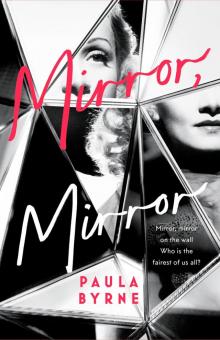 Mirror, Mirror
Mirror, Mirror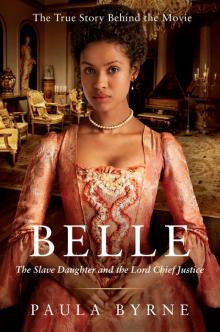 Belle
Belle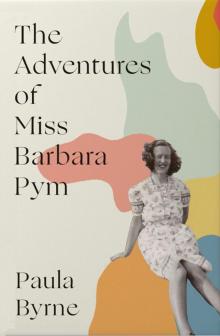 The Adventures of Miss Barbara Pym
The Adventures of Miss Barbara Pym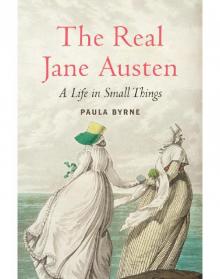 The Real Jane Austen
The Real Jane Austen Look to Your Wife
Look to Your Wife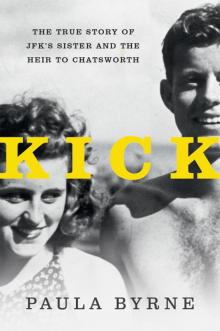 Kick
Kick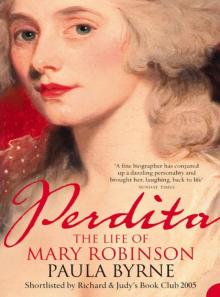 Perdita
Perdita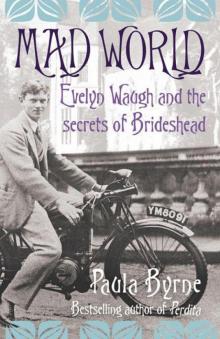 Mad World: Evelyn Waugh and the Secrets of Brideshead (TEXT ONLY)
Mad World: Evelyn Waugh and the Secrets of Brideshead (TEXT ONLY)